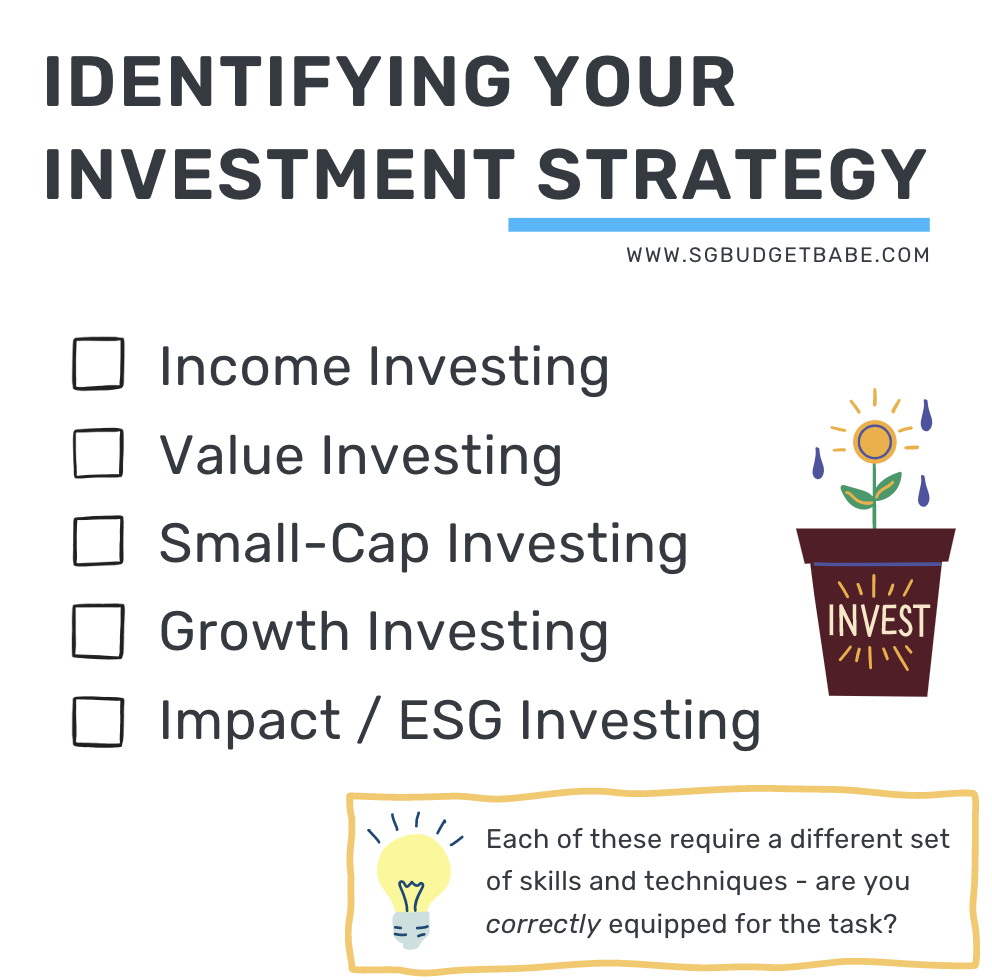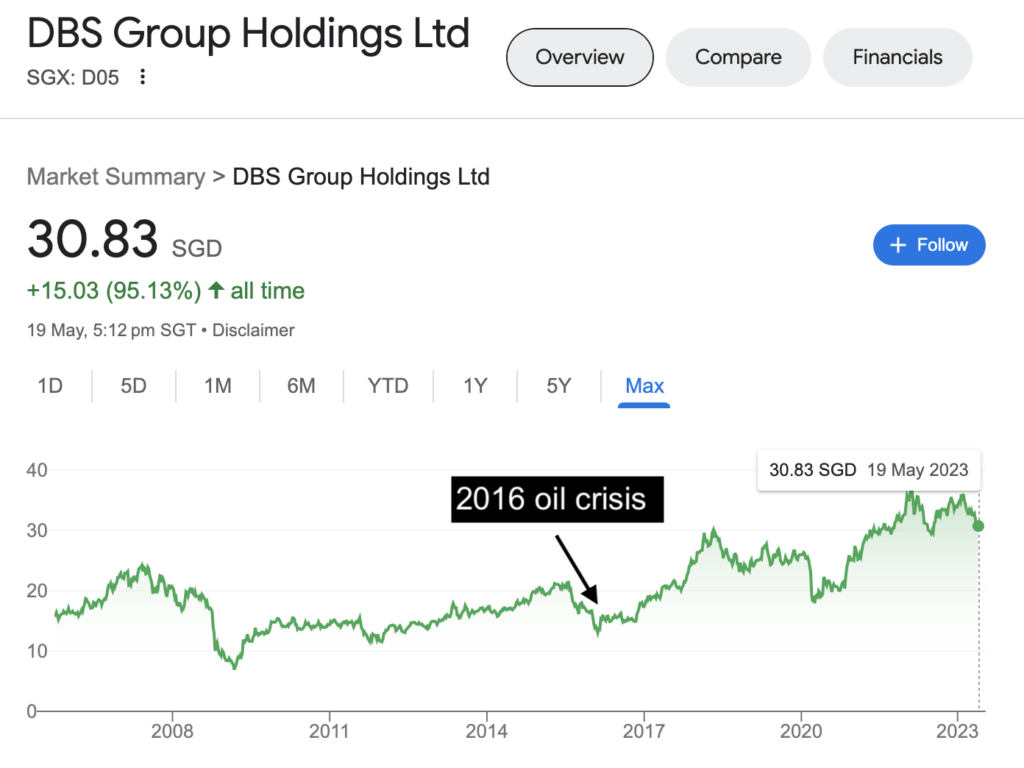If you’re looking at losses in your investment portfolio and feeling like you’ve been running around headless all this time, it might be worth going back to the beginning and figuring out (i) what your investment strategy is, then (ii) evaluating if what you’ve done all this while has been aligned with that or if you’ve gone completely off-course.
Many times, I hear from readers who ask me how I invest, but when I turn around and ask them the same question, most of them get stumped without having an answer.
If you found yourself nodding along to the above, you might just be in trouble. The cost? Your own portfolio and money.
So let’s go back to the basics once more:
1. Know your investment strategy
There are different approaches to investing – each requiring a different set of skills – so it is important that you know which method you’re adopting so that you can go out there and master the skills needed to get the returns that you’re after.
In general, most investment strategies fall into either one of the following camps:
- Income Investing – investing in companies that pay dividends and collecting regular payouts from holding the stock e.g. REITs and blue-chips
- Value Investing – investing in wonderful companies when they go on sale e.g. Chipotle, Apple, etc.
- Small-Cap Investing – investing in companies with a smaller market capitalization, often those with the potential to grow quickly e.g. Monster Beverage in the early 2010
- Growth Investing – investing in companies that are growing rapidly e.g. Tesla
- Impact / ESG Investing – investing in companies that are doing good, with a measurable environmental or charitable impact e.g. SunPower, Solaredge
There is also Index Investing, where you simply buy index funds and diversify across the market, often through low-cost ETFs (exchange traded funds) or mutual funds. However, while this method is definitely appealing for those who prefer a hands-off, low-skill approach, the risk is that if the market goes down in a recession or simply moves sideways for a long time, you’ll essentially be losing money. Read here for more about why this is so. Not so simple, is it?
On the other hand, wonderful companies not only outperform the market index, but they also continue to perform even during times of recession!
Identifying your investment approach right from Day 1 can also save you money from paying for too many courses (or resources) that simply do not fit within your investment framework.
Typically, once someone decides they want to “invest”, they start looking for resources that can teach them how. After all, investing is a new skill (with its own language!), so just think back to when you learnt how to ride a bike for the very first time. You had to first learn about what a bike is, the different parts (here’s the pedals to move, here’s the brakes to stop, etc), and then actually practice in order to master the skill.
The same goes with investing…except that there are many roads to Rome.

An income investor will need to look at different things vs. the growth investor. If you don’t even know what your basic investment strategy is, then you are going to waste a lot of time reading up (or paying for courses) on everything and anything. What a waste! Most people tend to sign up for a course to shortcut their learning, but since many courses often cover only limited strategies, it is no wonder many people complain about having paid over $10,000 for courses and still don’t quite know how to invest for themselves.
Pssst, if you’re like me and prefer to get exposure to all so that you can then decide which is better for you, check out my 6-in-1 course on the Academy (here) that I created to solve this pain point. Need a discount? Hit me up on my socials and you might just get a voucher 😉
See which approach above resonates most with you (it is ok to have multiple!) and then focus your energy and attention there.
What is the Budget Babe approach?
As you may have already guessed (from my name) by now, Budget Babe favours a value investing approach.
I also do invest in dividend and growth companies, but the difference is that I tend to buy them only when they are on sale.
To make things simple, I refer to it as value-growth investing i.e. finding wonderful companies that will continue to grow and buying them only when they are undervalued by Mr. Market.
Here’s one example from my personal portfolio: DBS Bank.

When I started looking at DBS in 2015, its share price unfortunately was not undervalued then, so I simply waited. My window of opportunity then appeared in 2016 during the oil crisis, where investors and analysts were worried about the bad debt on DBS books as many oil companies folded. However, my own research and assessment of the company led me to the conclusion that the stock had been oversold, and the share price was now officially in undervalued territory because of all the fear, so I pounced and bought DBS at under $14. A few days after my purchase, the news came out that DBS’ CEO, Piyush Gupta, had also bought a whole chunk of shares (shortly after me!).
Today, DBS is at $30 and I have both capital appreciation AND a regular stream of dividends – which was a 10% yield last year for me.
What happened?
- Value investing – this was my primary basis as I bought DBS when it was undervalued, and hence knew I would make money when the share price eventually recovered to its fair price.
- Growth – DBS was a wonderful company, one that I knew would continue to grow over the years
- Dividends – DBS also happened to be a blue-chip company that had a stable dividend payout history. While I wasn’t sure at the point of my purchase whether DBS would potentially halt dividends for the year, I knew for sure that at some point in time later it would definitely resume, and even grow over time.
We know what my investment in DBS has turned out to be by now 😉
2. Are you executing as per your investment strategy?
I’ve had readers tell me that they’re a value investor, but then the first thing they look at is how much the dividend yield on the stock is. No surprise then if you’re losing money, because you’re doing it all wrong.
Ask yourself – have the trades / actions you made in the last few years reflected your primary investment strategy?
For instance, you may identify yourself as a value investor, but did you get sucked into YouTube during the pandemic and bought into Tesla after seeing almost every financial Youtuber talking about it?
Knowing your investment strategy is the first step.
The second step is then learning the relevant skills and techniques for it.
Once you’ve learnt the “how-tos”, then it is all about taking action and finally, how well you execute it.
The last step is the hardest, and it’ll be a never-ending learning journey as you learn more about yourself and your mistakes.
But do it well, keep improving, and you’ll reach financial independence.
I’ve no doubt about it.
With love,
Budget Babe

